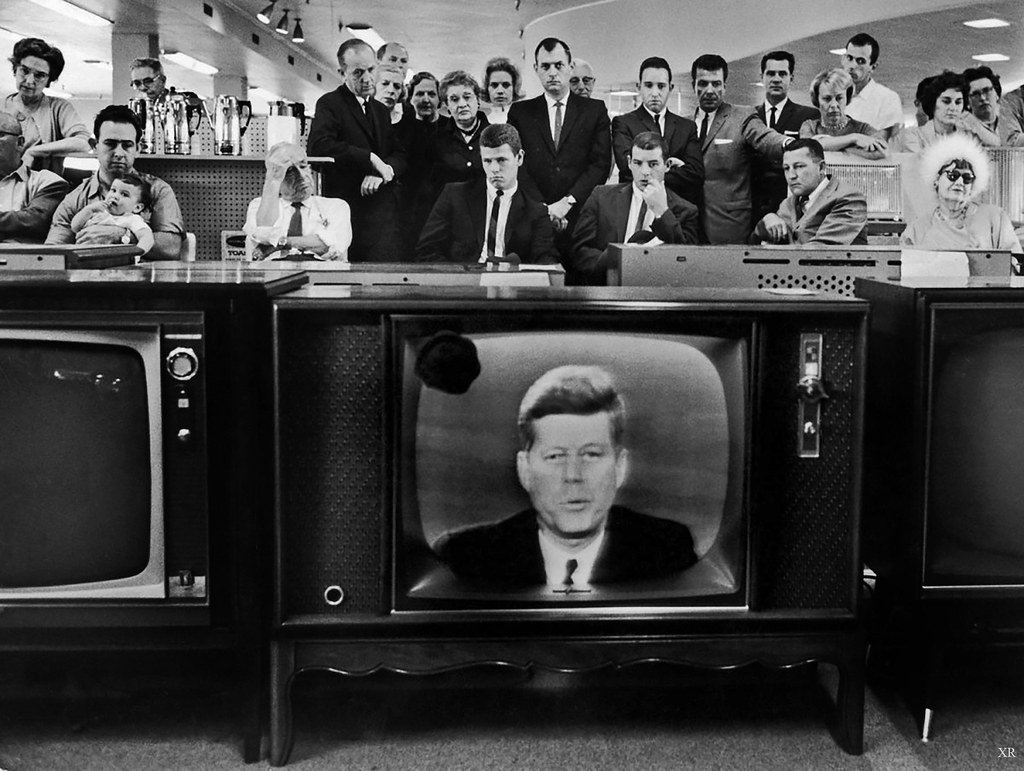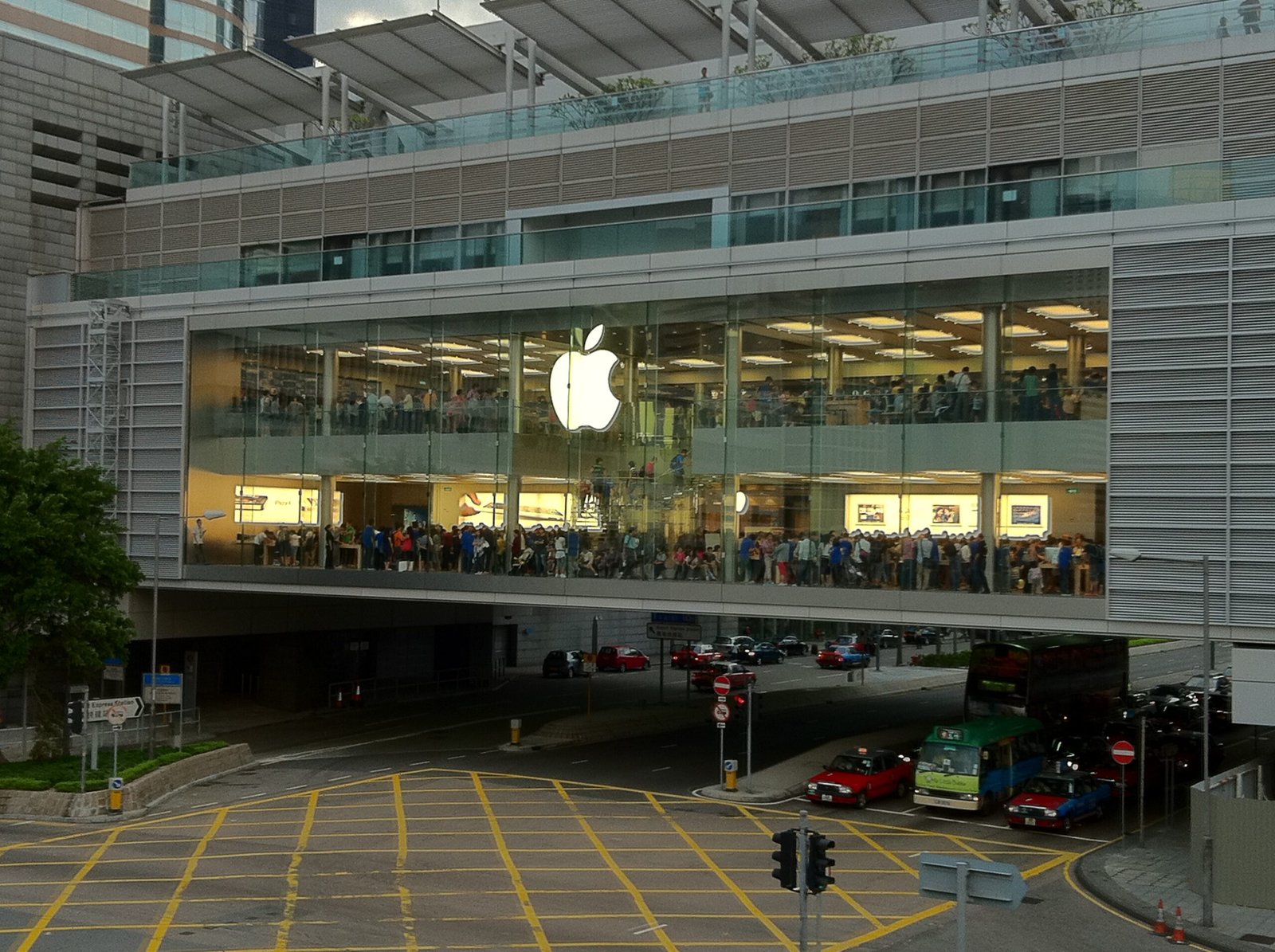The rise and fall of BlackBerry is a captivating narrative that unfolds over several decades, tracing the trajectory of a company that once dominated the mobile communication landscape. Founded as Research In Motion (RIM) in 1984 by Mike Lazaridis and Douglas Fregin, BlackBerry initially focused on wireless technology before pivoting towards the development of devices that would redefine mobile communication. The early 2000s saw the introduction of BlackBerry devices that seamlessly integrated email, phone, and web browsing – a groundbreaking concept that swiftly garnered widespread acclaim.
BlackBerry’s ascent was marked by its unrivaled popularity among businesses—professionals, and government agencies, owing to its robust security features and efficient messaging system. The iconic physical keyboard, push email, and the proprietary BlackBerry Messenger (BBM) service became synonymous with reliability and productivity. As the smartphone market burgeoned, BlackBerry’s stronghold on the corporate sector seemed unassailable.
However, the tides of the industry began to shift with the advent of touchscreen smartphones, spearheaded by the iPhone in 2007. BlackBerry faced a pivotal challenge in adapting to the changing consumer preferences that veered towards more user-friendly interfaces and expansive app ecosystems. Despite its early success, the company struggled to innovate swiftly enough, holding steadfastly to the physical keyboard design as touchscreen devices became the new norm.
A series of service outages in 2011 and internal leadership conflicts further compounded BlackBerry’s woes, eroding the trust of users and stakeholders. The once-mighty BlackBerry began to lose its market share to competitors like Apple and Android-powered devices. Attempts at revival, such as the introduction of BlackBerry 10 and a shift towards software and services, proved insufficient to restore the company to its former glory.
This narrative explores the highs and lows of BlackBerry’s journey, dissecting the factors that led to its decline and examining its attempts at reinvention in the face of an ever-evolving tech landscape. The BlackBerry story serves as a poignant reflection of the challenges faced by industry leaders in navigating the relentless pace of technological innovation.
Table of Contents
What caused the downfall of BlackBerry?
BlackBerry’s downfall can be attributed to a combination of factors. Firstly, the company needed help to adapt to the rapidly changing smartphone market. While BlackBerry initially excelled in providing secure and efficient communication for business professionals, it failed to keep pace with consumer preferences shifting towards touchscreen devices and robust app ecosystems.
The emergence of competitors like the iPhone and Android-based smartphones further eroded BlackBerry’s market share. These devices offered more intuitive interfaces, multimedia capabilities, and a diverse range of applications, features that BlackBerry’s traditional models lacked. The company’s insistence on maintaining the Iconic physical keyboards also became a disadvantage as touchscreens became the industry standard.
Technical issues and service outages in 2011 tarnished BlackBerry’s reputation for reliability and security, leading to a loss of trust among users.
Internal challenges, including leadership conflicts and corporate restructuring, further hampered the company’s ability to respond effectively to market dynamics.
Despite attempts to revive its fortunes through the introduction of BlackBerry 10 and a shift towards software and services, BlackBerry could not regain its former prominence. The failure to innovate quickly, coupled with a reluctance to abandon outdated design elements, ultimately sealed BlackBerry’s fate in the highly competitive smartphone landscape.
What happened to the BlackBerry company?

BlackBerry, once a trailblazer in the mobile communication industry, experienced a significant decline primarily due to the company’s inability to adapt to evolving market trends. As touchscreen smartphones, led by the iPhone and Android devices, gained prominence, BlackBerry clung to its traditional physical keyboard design. This refusal to innovate swiftly resulted in a loss of consumer interest and a decline in market share.
The company faced internal challenges, including leadership conflicts and a series of high-profile service outages in 2011 that damaged its reputation for reliability and security. Despite attempts to revitalise the brand with the introduction of BlackBerry 10 and a shift towards software and services, these efforts were unable to compete with the established ecosystems of iOS and Android.
By 2016, BlackBerry decided to outsource its hardware production, marking the end of its era as a major smartphone manufacturer. The company shifted its focus to software solutions, particularly in enterprise mobility management and cybersecurity, aiming to capitalise on its expertise in secure communications.
While BlackBerry no longer dominates the smartphone market, it continues to exist as a niche player, emphasising its strengths in particular software and services for specific business and government needs.
What is the BlackBerry story?
The BlackBerry story encapsulates the rise and fall of a once-dominant player in the mobile communication industry. Founded as Research In Motion (RIM) in 1984, BlackBerry gained prominence in the early 2000s with its innovative devices, renowned for efficient email capabilities and top-notch security.
The iconic physical keyboard, push email, and the BlackBerry Messenger (BBM) service made BlackBerry synonymous with corporate communication.
However, the company faced a seismic shift in the smartphone landscape with the advent of touchscreen devices, notably the iPhone. BlackBerry’s reluctance to embrace this change, coupled with internal leadership conflicts and service outages in 2011, led to a rapid decline. Competitors like Apple and Android devices seized market share, relegating BlackBerry to a mere fraction of its former prominence.
Attempts at revival, including the launch of BlackBerry 10 and a strategic shift towards software and services, needed to be revised to reclaim its former glory.
The BlackBerry story serves as a cautionary tale about the imperative of adaptability in the ever-evolving tech industry. It underscores the challenges faced by industry leaders in sustaining relevance amid rapid technological advancements.
The Rise and Fall of Blackberry
The rise and fall of BlackBerry is a fascinating story that spans several decades, marked by innovation, dominance, and, ultimately, decline. Here’s a detailed overview:
Rise
Founding and Early Success (1984-2000)
Founded in 1984 by Mike Lazaridis and Douglas Fregin in Waterloo, Ontario, Canada, BlackBerry, named initially Research In Motion (RIM), commenced as a developer of wireless technology. A commitment to advancing wireless devices marked the company’s initial years. However, a pivotal shift occurred in the late 1990s when RIM redirected its focus toward wireless email devices, setting the stage for the creation of the iconic BlackBerry. This strategic pivot proved visionary, as it laid the foundation for a series of groundbreaking devices that would redefine mobile communication. The emphasis on secure and efficient wireless email capabilities propelled BlackBerry to prominence in the early 2000s, solidifying its status as the preferred choice for business professionals and government agencies globally.
Introduction of BlackBerry Devices (2000-2007)

In the year 2000, Research In Motion (RIM) unveiled its pioneering device, the BlackBerry 957, marking a significant milestone in mobile communication. This innovative device seamlessly integrated email, phone, web browsing, and other features, offering a comprehensive solution for professionals on the go. Its efficient email capabilities and a secure messaging system quickly garnered favor among business professionals, establishing BlackBerry as a go-to choice for corporate communication.
Building on the success of the BlackBerry 957, subsequent models like the BlackBerry Curve, Bold, and Pearl further solidified the company’s dominance in the smartphone market. The iconic physical keyboard, along with innovations such as the BlackBerry Messenger (BBM) service, made BlackBerry synonymous with reliability and productivity. This era marked the pinnacle of BlackBerry’s influence, particularly within the corporate sector, where it became the preferred mobile communication device for millions of professionals worldwide.
Enterprise Adoption and Global Expansion
BlackBerry’s ascendancy in the early 2000s was fueled by its unparalleled secure messaging platform and robust encryption technology, positioning it as the preferred communication tool for businesses and government entities globally. The company’s commitment to providing a secure environment for messaging and data transmission made BlackBerry devices indispensable for professionals seeking privacy and reliability. Millions of users embraced BlackBerry smartphones, drawn by the efficiency of its messaging system and the seamless integration of communication and productivity tools.
The platform’s popularity soared as it became synonymous with corporate communication excellence, establishing itself as an essential tool for executives, professionals, and government officials alike. BlackBerry’s dominance during this era underscored the pivotal role of security in shaping the preferences of users in enterprise and government sectors.
Innovative Features
BlackBerry’s ascent to prominence was fueled by a pioneering spirit that introduced revolutionary features to the mobile communication landscape. The iconic physical keyboard became a hallmark of BlackBerry devices, offering users a tactile and efficient means of input. Additionally, the introduction of push email was a game-changer, allowing real-time email delivery and setting a new standard for communication speed.

The BlackBerry Messenger (BBM) further cemented the brand’s appeal, providing users with a secure and instant messaging platform exclusive to BlackBerry devices. This sense of exclusivity and robust security measures became synonymous with BlackBerry, attracting business professionals and government agencies seeking reliable and secure communication solutions.
The amalgamation of these innovative features forged BlackBerry’s reputation for reliability and efficiency, positioning it as a trailblazer in the mobile communication industry. However, the subsequent shift in consumer preferences towards touchscreen devices challenged BlackBerry’s traditional strengths, ultimately contributing to its decline in the competitive smartphone market.
Fall
Competition from iPhone and Android (Late 2000s)
BlackBerry’s supremacy faced a pivotal challenge with the rise of touchscreen smartphones, exemplified by the iPhone’s debut in 2007 and subsequent Android-powered devices. These new entrants revolutionised the market with their intuitive interfaces, extensive app ecosystems, and multimedia capabilities, presenting a stark departure from BlackBerry’s traditional strengths. While BlackBerry had excelled in secure and efficient communication, its resistance to adopting touchscreen technology and a more diverse range of applications left it trailing behind competitors.
Consumers were drawn to the user-friendly experiences offered by iPhones and Android devices, featuring responsive touchscreens and a plethora of multimedia functionalities. BlackBerry’s delay in adapting to these shifting consumer preferences proved detrimental, as users increasingly gravitated towards the innovative and versatile features provided by its competitors. This marked the beginning of BlackBerry’s decline, highlighting the significance of adaptability in the dynamic landscape of the smartphone industry.
Failure to Innovate
Despite enjoying early success as a pioneer in mobile communication, BlackBerry found itself grappling with the imperative to adapt swiftly to changing market dynamics. The company’s initial triumphs were anchored in its efficient email capabilities and secure messaging, epitomized by the iconic physical keyboard. However, as the industry embraced touchscreen technology and app ecosystems, BlackBerry hesitated to depart from its traditional keyboard-centric design.
This reluctance to evolve with consumer preferences became a pivotal challenge. Competitors like the iPhone and Android devices, with their user-friendly interfaces and diverse applications, gained traction while BlackBerry clung to its established formula. The failure to embrace touchscreens expediently contributed to a decline in market relevance. The story of BlackBerry serves as a poignant lesson about the critical importance of agility in adapting to evolving consumer tastes and technological paradigms within the dynamic landscape of the tech industry.
Service Outages and Technical Issues
In 2011, BlackBerry encountered a series of high-profile service outages and technical glitches, dealing a severe blow to its longstanding reputation for reliability and security. These incidents, which affected millions of users globally, resulted in widespread disruptions to email, messaging, and internet services. The outages persisted for several days, causing frustration and inconvenience among BlackBerry users, who relied heavily on the platform for secure and efficient communication.
The fallout was profound, as the reliability issues eroded customer trust in BlackBerry’s infrastructure. Faced with prolonged service disruptions and growing dissatisfaction, many users swiftly migrated to alternative platforms, notably iOS and Android devices. This mass exodus marked a critical turning point for BlackBerry, intensifying its struggle to retain market share and contributing significantly to its decline in the highly competitive smartphone market. The 2011 service outages stand as a pivotal moment in the BlackBerry story, underscoring the critical importance of seamless and dependable service in maintaining customer loyalty and brand integrity.
Leadership Challenges
Internal struggles proved detrimental to BlackBerry’s once-sturdy foundation, marked by management changes and corporate restructuring that exacerbated its decline. Leadership conflicts within the company, coupled with a notable absence of a cohesive strategy, rendered BlackBerry ill-equipped to navigate the evolving market challenges. A unified vision would have allowed timely responses to emerging trends, hindering the company from adapting to the rapidly changing smartphone landscape.
Management changes brought about a lack of continuity, leading to a fragmented approach to addressing market dynamics. This internal discord, combined with external pressures, contributed significantly to BlackBerry’s inability to sustain its dominance. As competitors embraced innovation and consumer preferences shifted, BlackBerry’s internal disarray became a critical factor in the company’s fall from grace, underscoring the pivotal role of effective leadership and strategic coherence in navigating the complexities of the tech industry.
Decline in Market Share
In the face of intensified competition from industry giants such as Apple and Samsung, BlackBerry experienced a staggering decline in global smartphone market share. The company, which had once held a dominant position in the market, saw its fortunes dramatically reverse by 2013. As consumers increasingly gravitated towards touchscreen devices and diverse app ecosystems, BlackBerry struggled to keep pace with changing preferences. By this pivotal year, BlackBerry’s market share had plummeted to single digits, highlighting the extent of its diminished influence.
This steep decline reflected a failure to adapt to evolving consumer demands and a reluctance to embrace the technological shifts that characterized the smartphone landscape. The once-pioneering brand found itself marginalized as competitors capitalized on innovation, leaving BlackBerry to grapple with the repercussions of its inability to retain its once-unassailable market standing.
Attempts at Revival

Transition to BlackBerry 10
In a bid to reclaim its standing in the fiercely competitive smartphone market, BlackBerry introduced its new operating system, BlackBerry 10, in 2013. This marked a pivotal moment for the company as it sought to revitalize its brand and appeal to modern consumer preferences. The BlackBerry 10 platform was designed to offer a refreshed user experience, incorporating a modern interface, multitasking capabilities, and an improved app ecosystem.
However, despite the strategic move towards innovation, the success of BlackBerry 10 hinged on its ability to attract both consumers and developers to the platform. Unfortunately, the operating system struggled to gain widespread adoption, facing challenges in keeping pace with the app-rich environments of competitors like iOS and Android. The hurdles encountered by BlackBerry 10 underscored the formidable barriers to resurgence in an industry characterised by rapid technological evolution and shifting consumer expectations.
Focus on Software and Services
Acknowledging the challenges in its hardware business, BlackBerry underwent a strategic transformation, redirecting its focus to software and services, with a specific emphasis on enterprise mobility management (EMM) and cybersecurity. Realizing the evolving landscape of the tech industry, the company opted for a proactive approach to stay relevant. This transition involved the acquisition of multiple security firms, strengthening BlackBerry’s position in the cybersecurity domain.
The company pivoted towards delivering secure software solutions tailored for the unique needs of businesses and government entities. By leveraging its expertise in security, BlackBerry sought to redefine its role in the market, offering innovative solutions to address the growing concerns surrounding data protection and mobile device management. This strategic shift underscored BlackBerry’s resilience and adaptability in responding to the dynamic demands of the digital era.
Outsourcing Hardware Production
In a pivotal move in 2016, BlackBerry made a strategic decision to halt internal hardware development, marking a definitive shift in its trajectory as a major smartphone manufacturer. The company, once synonymous with cutting-edge devices, acknowledged the changing dynamics of the mobile industry. Opting to outsource smartphone production to third-party manufacturers, BlackBerry aimed to streamline operations and reduce operating costs.
While this decision allowed the company to adapt to a rapidly transforming market and focus on its strengths, it also symbolized the end of an era for BlackBerry as a dominant force in smartphone manufacturing. This transition underscored the challenges faced by legacy tech companies in staying competitive, urging BlackBerry to redefine its identity and pivot towards a new chapter, emphasizing software solutions and services.
BlackBerry’s trajectory from dominance to decline reflects the perennial challenges encountered by tech giants in an ever-changing industry landscape. Despite early innovations in mobile communication and security, BlackBerry faltered due to its inability to pivot with evolving consumer preferences, compounded by internal strife and external competition. The shift towards touchscreen smartphones, epitomized by the iPhone, left BlackBerry clinging to traditional keyboard designs while consumers embraced a new era of intuitive touch interfaces.
However, BlackBerry’s adaptive response to its decline showcased resilience. By refocusing on software and services, particularly in enterprise mobility management and cybersecurity, the company found a niche market. Although no longer a smartphone powerhouse, BlackBerry demonstrated a capacity for reinvention, emphasizing its enduring relevance in specialized domains. This evolution stands as a testament to the tech industry’s unforgiving nature, where adaptability and innovation are pivotal for sustained success.












